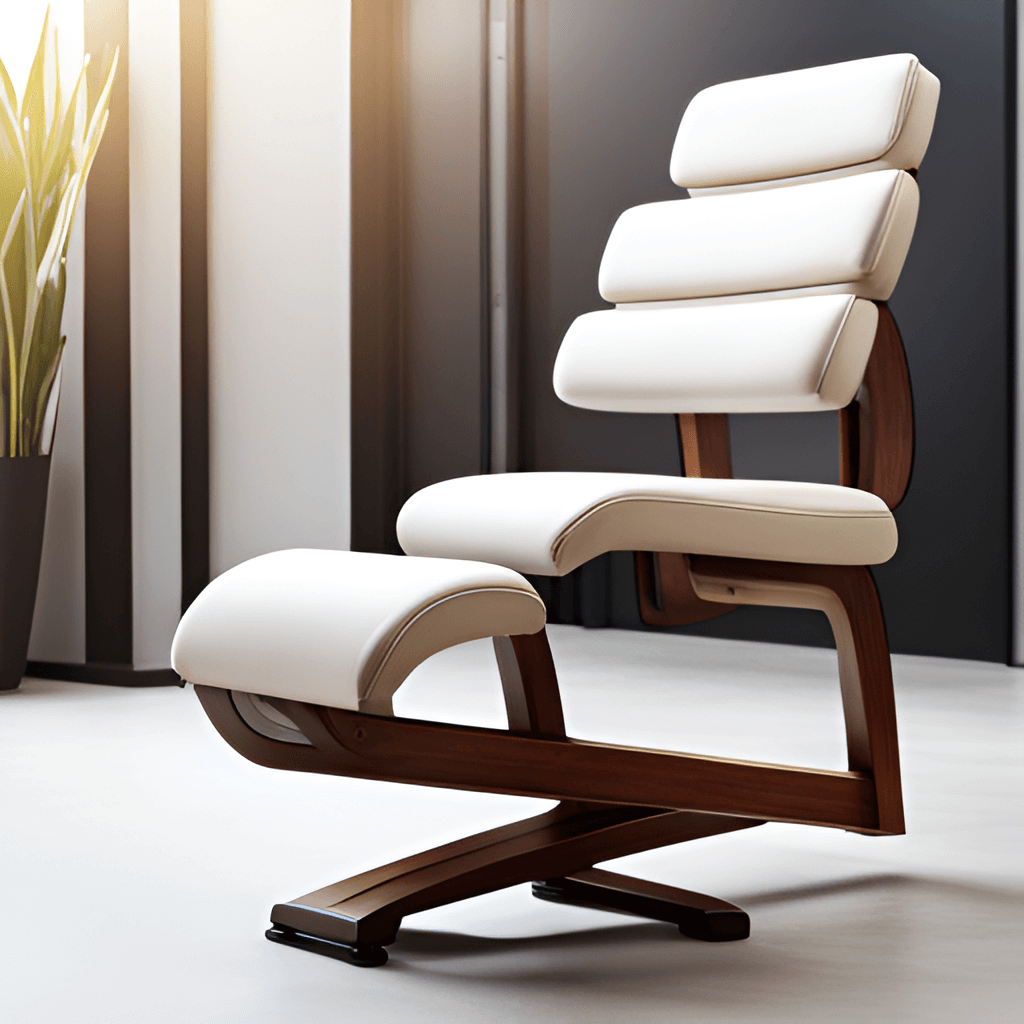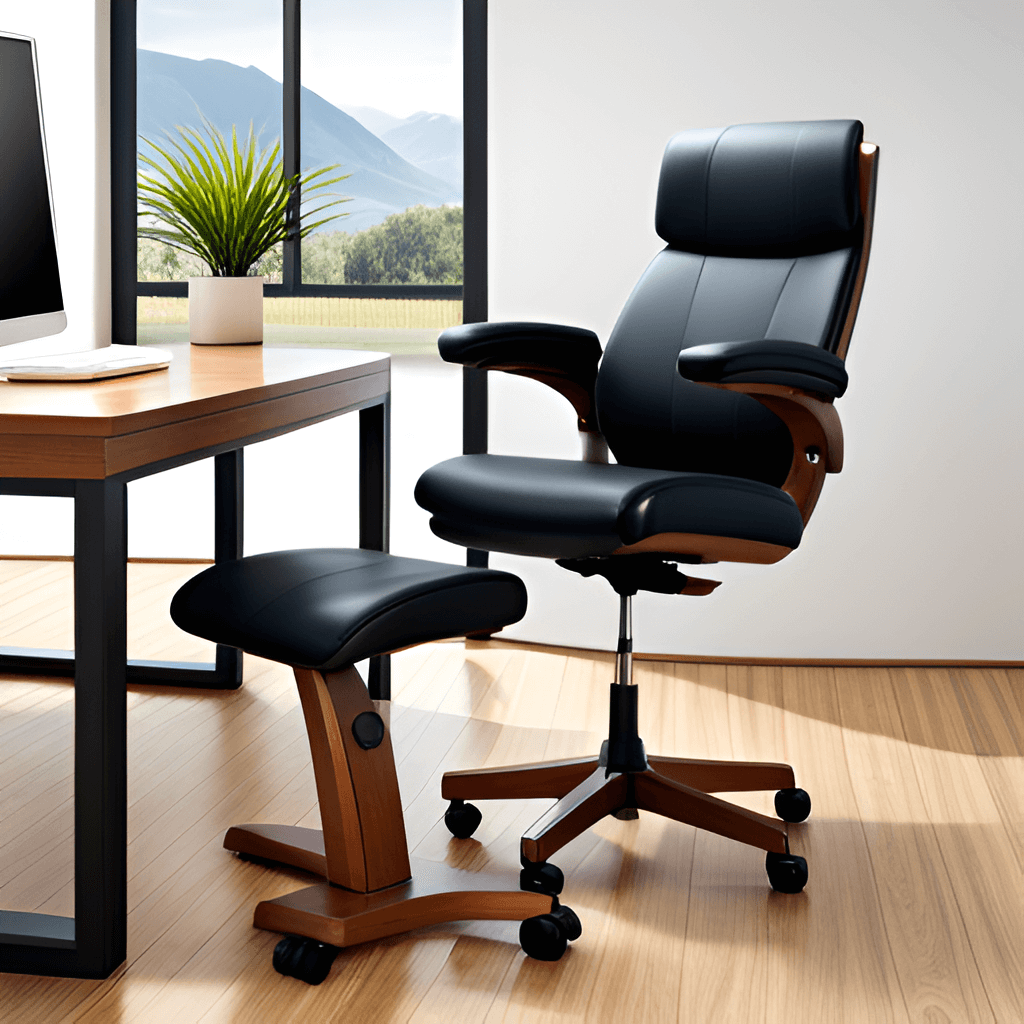
Active Sitting with Kneeling Chairs: A Comprehensive User’s Guide
Introduction
Welcome to Opvital, your trusted source for all things related to active sitting with kneeling chairs and its impact on work life and productivity. In this article, we will delve into the world of kneeling chairs and provide you with a comprehensive user’s guide on active sitting with these innovative ergonomic solutions. If you’ve been curious about using kneeling chairs to improve your sitting posture and overall comfort, you’re in the right place. We’ll walk you through everything you need to know to make the most of this innovative seating solution.
Understanding Kneeling Chairs
What Are Kneeling Chairs?
Kneeling chairs are a unique alternative to traditional office chairs, specifically designed for active sitting. Unlike conventional chairs, which encourage a 90-degree sitting posture, kneeling chairs promote a more open hip angle and a natural curve in the lower back. They typically consist of a seat angled downward and a knee pad or knee rest. This design encourages a “kneeling” position, where your weight is distributed between your shins and your buttocks.
The Ergonomic Benefits of Active Sitting
One of the primary reasons people choose kneeling chairs is the ergonomic advantages they offer for active sitting. Here’s why they’re worth considering:
| Benefit | Description |
|---|---|
| Improved Posture | Kneeling chairs encourage proper spinal alignment, reducing the risk of slouching or hunching over your desk. This can alleviate back and neck pain associated with poor posture. |
| Reduced Strain | By distributing your body weight more evenly, kneeling chairs can reduce the pressure on your lower back and spine. This can be especially beneficial during long hours of work. |
| Increased Focus | Active sitting on kneeling chairs promotes micro-movements, enhancing blood circulation and keeping you more engaged in your tasks, leading to improved focus and productivity. |
| Core Strength | Using a kneeling chair engages your core muscles as they work to support your body in an upright position, helping to strengthen your core over time. |
| Better Breathing | The open hip angle in kneeling chairs allows for better lung expansion, facilitating deeper and more comfortable breathing, which can reduce fatigue and increase alertness. |
| Enhanced Circulation | Kneeling chairs encourage healthier blood flow throughout your body, reducing the risk of numbness or tingling in your legs, even during prolonged periods of sitting. |
| Reduced Discomfort | Many users experience less discomfort and fewer aches associated with prolonged sitting when using kneeling chairs, making them a suitable choice for those with back issues. |
| Active Sitting | Kneeling chairs promote active sitting by encouraging subtle movements, which can prevent stiffness, reduce sedentary health risks, and contribute to a more dynamic workday. |
Types and Designs for Active Sitting
Kneeling chairs come in various designs to suit different preferences and needs for active sitting. Some have a single knee pad, while others feature a dual-knee pad design. Some are equipped with backrests, while others are backless. It’s essential to choose a design that fits your specific requirements and comfort preferences.
| Kneeling Chair Design | Description | Benefits for Active Sitting |
|---|---|---|
| Single Knee Pad | Kneeling chairs with a single knee pad have a simple design, with one cushioned pad for your knees. | 1. Lightweight and easy to maneuver. 2. Promotes an open hip angle for active sitting. |
| Dual Knee Pad | Kneeling chairs with a dual knee pad design feature separate cushions for each knee, offering additional support. | 1. Enhanced knee comfort during extended sitting. 2. Supports balance and stability during active sitting. |
| Backrest Included | Some kneeling chairs come with an attached backrest, providing lumbar support and back comfort. | 1. Offers extra support for the lower back. 2. Suitable for those who prefer occasional backrest use. |
| Backless | Backless kneeling chairs lack a backrest, encouraging users to engage their core muscles for support. | 1. Promotes active sitting and core engagement. 2. Suitable for users who prefer an open sitting experience. |
Setting Up Your Kneeling Chair for Active Sitting
| Assembling Your Kneeling Chair |
|---|
| Before you start active sitting on your kneeling chair, you may need to assemble it. Follow the manufacturer’s instructions carefully to ensure proper assembly. Ensure that all components are securely attached for stability and safety. |
| Adjusting for Comfort in Active Sitting |
|---|
| Adjusting your kneeling chair is crucial for optimal comfort during active sitting. Here’s how to do it: |
| Stability Check |
|---|
| Before you start active sitting on your kneeling chair regularly, double-check its stability. Ensure that all components are secure, and there is no wobbling. A stable chair is essential for safe and comfortable active sitting. |
Proper Sitting Posture for Active Sitting
The Right Way to Sit Actively
Using a kneeling chair effectively for active sitting starts with adopting the correct sitting posture:
Maintain a Straight Spine
Sit up straight, with your back in a neutral, natural position during active sitting. Avoid slouching or leaning forward.
Align Hips and Knees
Ensure that your hips are aligned with your knees during active sitting. Your buttocks should rest comfortably on the seat, and your knees should be supported by the knee pad.
Weight Distribution
Proper weight distribution is key to using a kneeling chair correctly for active sitting. Make sure your body weight is evenly distributed between your buttocks and your shins. Avoid putting excessive pressure on either area.
Using Kneeling Chairs for Productivity and Active Sitting
The Benefits of Active Sitting
Kneeling chairs promote what’s known as “active sitting.” This dynamic sitting style has several advantages for productivity and active sitting:
Increased Focus
Active sitting can help you stay more engaged in your work during active sitting, as the slight rocking motion encourages micro-movements that stimulate circulation and brain activity.


Reduced Discomfort
Many people find that kneeling chairs help reduce discomfort associated with prolonged sitting and encourage active sitting. This can result in increased work efficiency and fewer distractions.
Integrating Kneeling Chairs into Your Active Sitting Routine
To make the most of your kneeling chair for active sitting, consider the following tips:
Gradual Transition
If you’re new to kneeling chairs and active sitting, give your body time to adjust. Start by using it for short periods and gradually increase the duration as your muscles adapt.
Frequent Active Breaks
Even with a kneeling chair, it’s essential to take regular breaks during active sitting to stretch and move around. Use your newfound comfort to stay productive and active during work breaks.
Overcoming Common Challenges in Active Sitting
Initial Discomfort
It’s common to experience some initial discomfort when using a kneeling chair for active sitting, particularly if you’re accustomed to traditional chairs. Here’s how to address it:
Padding
Consider adding extra padding to the knee rest or seat to alleviate pressure points and make the chair more comfortable for active sitting.
Stretching
Incorporate stretching exercises into your daily routine to ease muscle tension and prevent discomfort during active sitting.
Consultation
If discomfort persists during active sitting, consult with an ergonomic specialist or a healthcare professional to ensure you’re using the chair correctly.
Maintaining Your Kneeling Chair for Active Sitting
Cleaning and Maintenance
To ensure your kneeling chair remains a comfortable and functional seating option for active sitting, follow these maintenance tips:
Inspections
Periodically inspect the chair for any loose screws, bolts, or damaged components during active sitting. Tighten or replace them as needed to maintain stability.
Cushion Replacement
If your chair has removable cushions, consider replacing them when they show signs of wear and tear to maintain comfort and support during active sitting.
Ergonomic Accessories for Enhanced Active Sitting Comfort
Enhancing Comfort
While kneeling chairs are designed to promote ergonomic comfort for active sitting, you can further enhance your sitting experience with these accessories:
Footrests
A footrest can provide additional support and comfort during active sitting, especially if your chair lacks a backrest.

Lumbar Supports
Consider adding a lumbar support cushion or pillow to maintain proper lumbar curvature during active sitting.
Conclusion
Incorporating a kneeling chair into your work routine can lead to improved posture, reduced discomfort, and increased productivity during active sitting. Remember to follow the setup instructions carefully, maintain proper sitting posture, and give your body time to adapt to this new way of active sitting.
As you explore the world of ergonomic solutions for active sitting, don’t forget to visit Opvital for more tips, product recommendations
FAQ’s
Active sitting is a dynamic sitting style that encourages subtle movements while seated. It differs from traditional sitting in that it promotes continuous posture adjustments, preventing prolonged static positions that can lead to discomfort. Kneeling chairs facilitate active sitting by encouraging a more open hip angle and spinal alignment.
While kneeling chairs offer ergonomic benefits, they may not be suitable for everyone. Individuals with certain medical conditions or mobility issues should consult a healthcare professional before using kneeling chairs. Additionally, it’s essential to gradually adapt to kneeling chairs to avoid discomfort during the transition.
Kneeling chairs can be a valuable addition to your workspace, but they may not replace your traditional office chair entirely. Many users find that alternating between a kneeling chair and a standard chair throughout the day provides the best balance of comfort and ergonomics.
The time it takes to adapt to a kneeling chair varies from person to person. Some individuals may feel comfortable within a few days, while others may take a few weeks. It’s essential to start slowly and gradually increase the duration of use to allow your body to adjust comfortably.
Incorporating stretching and mobility exercises into your daily routine can help enhance the benefits of active sitting with a kneeling chair. Consider exercises that target the lower back, hips, and leg muscles to maintain flexibility and reduce discomfort.
Additional Resources
- Digital Marketing Tools: The Importance of Marketing Tools
 The Importance of Marketing Tools In today’s digital landscape, businesses …
The Importance of Marketing Tools In today’s digital landscape, businesses …Digital Marketing Tools: The Importance of Marketing Tools Read More »
- A Guide to Fundamental Marketing Tools for Businesses
 What are marketing tools? At Opvital, we’re dedicated to shedding …
What are marketing tools? At Opvital, we’re dedicated to shedding …A Guide to Fundamental Marketing Tools for Businesses Read More »
- The Significance of Marketing Tools
 Key Takeaways for Marketing Tools Marketing Tools Overview – Diverse …
Key Takeaways for Marketing Tools Marketing Tools Overview – Diverse … - A Comprehensive NeuronWriter Review: Unveiling Its SEO Powers
 Welcome to Opvital’s in depth NeuronWriter Review. NeuronWriter is more …
Welcome to Opvital’s in depth NeuronWriter Review. NeuronWriter is more …A Comprehensive NeuronWriter Review: Unveiling Its SEO Powers Read More »
- Are Digital Marketing Bootcamps Worth It? Exploring the Pros and Cons
 When it comes to advancing your career in the fast-paced …
When it comes to advancing your career in the fast-paced …Are Digital Marketing Bootcamps Worth It? Exploring the Pros and Cons Read More »
